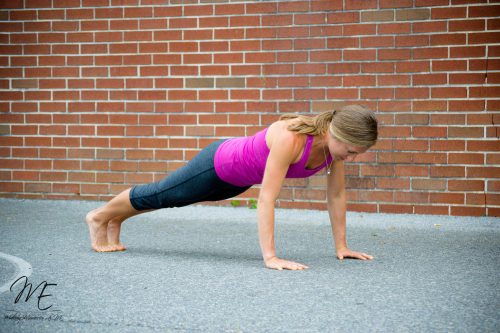
Pat is out of town this week.
Obviously, we are chatting on Facebook about how terrible it is here without him. I have assured him that everyone at The Buttery is concerned about his well-being.
As you might expect, I’ve been charged with initiating gossip amongst the regulars here to see what people actually think of Pat.
“So glad we finally have a morning without that pretentious, muscle-shirt-wearing, pu-erh-drinking, Porsche-driving shmuck, am I right?”
So far, I can only imagine their enthusiastic replies. Full of relief that someone has finally said it aloud.
Enough about that.
I don’t want to feed into Pat’s [already overbearing] egotistical ways, so let’s instead move on to the problem-solving portion of our “So why am I still not losing weight?” series. (Check out Part 1 HERE and Part 2 HERE if you missed them.)
Brief recap: If you find yourself struggling to lose weight, you first must identify the WHY.
Step 1. Why am I not losing weight?
-You didn’t have a plan.
-You didn’t follow the plan.
-You didn’t have a plan you could follow.
{For most people, it’s the second one.}
Step 2. Why didn’t I follow my plan?
-Mindset
-Nutrition
-Exercise
{For most people, it’s more of a combination than they realize.}
Step 3. Problem-Solving Strategies
Regardless of the problem, if it can’t be fixed by WD40 or Duct Tape…
My #1 Hack for Losing Weight is Logging
[Not chopping trees….although…that might produce a good calorie burn. Nothing like good, honest labor….]
Log everything!
Document, document, document.
Keep a weight-loss journal that documents more than the physically-observable aspects of your efforts.
We are more than our physical bodies.
Because of this, black and white approaches fall short. We cannot ignore our hearts & souls and expect success, physical or otherwise.
In other words, your journal should account for your physical, mental, spiritual, and emotional status.
Especially if you are struggling, and especially for at least two weeks, your journal should include mindset, nutrition, and exercise.
Here’s the down-‘n’-dirty of it:
- If you exercise, I’m sure you’re familiar with the concept of a workout log that tracks movements, time, sets, reps, rest, weight, etc. Definitely do this. Then, take it a bit further:
- Track how your body feels before, during, and after your workout.
- Tiredness, soreness, aches and pains, etc.
- Track your motivation before, during, and after your workout.
- On a scale of 1-10, how motivated were you?
- Track how your body feels before, during, and after your workout.
- If you have ever dieted, you’re likely familiar with the concept of a food log. You may have experience calorie-counting or even documenting macronutrients. I don’t believe this to be completely necessary. However, track your nutrition.
- Track your general consumption, including beverages, snacks, and meals.
- You don’t need exact measured amounts. (The phrase “half spoonful” is perfectly allowable.)
- Document the time.
- Track how your body feels before, during, and after your snack/meal.
- Track cravings.
- Track your general consumption, including beverages, snacks, and meals.
*Remember, we are not merely physical beings. Therefore, the science of nutrition, the mathematical calculations, only get us so far. We need to take a look at how we individually respond to our eating. If you have a light breakfast, do you feel crabby by noon? Do you eat a heavy lunch? Do you feel lethargic? Do you have a sluggish workout unless you eat a robust breakfast and a lighter lunch? Within our bodies, nothing occurs in a vacuum. Everything affects everything.
- If you have ever kept a diary (or found your sisters), you’re familiar with tracking the other stuff. Track this now, too.
- Jot a few notes about your day.
- What’s going on at work?
- How have you been feeling?
- How is your social life?
- Are you having fun?
- How have you been sleeping?
- Do you have mental clarity?
- What goals are you striving for? What accomplishments are you celebrating?
- This should only take a few moments, and it’s a great habit.
- Jot a few notes about your day.
This practice of journaling will ultimately lead to greater self-awareness, greater mindfulness.
You’ll see patterns. You’ll notice pitfalls and begin predicting them and rerouting rather than being thrown off by them.
You’ll be able to make tweaks. You’ll be in tuned to cause and effect.
Also, you’ll have a tangible record of what worked and what didn’t.
If you ever get off track, you’ll be able to hop back on by looking at what worked last time.
You can look up meals that made you feel vibrant and well-nourished.
You can reflect on all those times you felt blech before your workout only to reap the reward of your efforts post-workout.
You’ll be reminded of the stress-relief you always felt after you broke a sweat.
Or maybe how well you always slept.
Or how much better you got along with your spouse.
Or how much more focused you were at work.
SWEATY!
I almost forgot!
Here’s your prescription:
2 minutes of jump squats, 1 minute of rest, 1 minute of jump squats.
Max. effort, of course!
P.S. This may seem excessive. For the first few weeks, it may not feel like a “minimalist” approach to you. However, let me assure you: the upfront cost of effort will pay off abundantly. And THAT’s what minimalism is all about. Minimal effort to maximum benefit.
P.P.S. I am currently trying to convince Pat that they are giving free elephant rides at The Buttery today. Back me on this, won’t you?
P.P.P.S. Do you have experiencing with journaling for weight-loss success? If so–or if you think you might give it a shot–will you leave a comment? THANKS!
FINAL PS. Pat’s new Inner Circle is perfect and amazing. So is his 30-Day Hormone Optimization Challenge, which is included. Check it out!